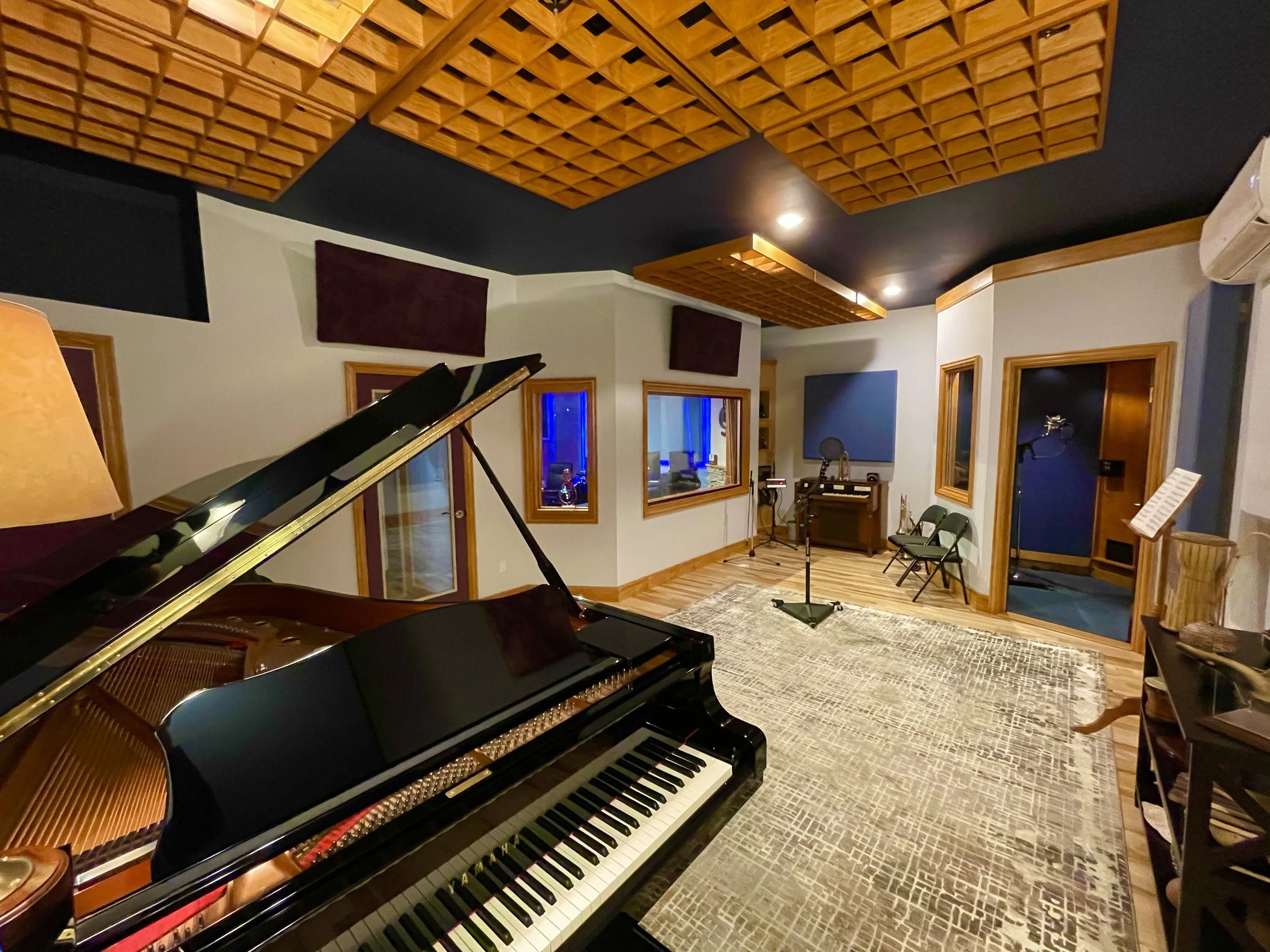Jingle vs. a Popular Song
Sometimes companies will choose an established, well known song as opposed to an original commercial jingle for their advertising campaign. Why? Which is more effective? There are advantages to both, so let’s examine and compare.
A microphone.
With a commercially released song, you have the benefit of instant familiarity. People already know the song, the lyrics, and can hum along. With a commercial jingle, people have to hear it multiple times before it sticks. If a company has a decent amount of media coverage, eventually the jingle can attain the same level of familiarity as the song in the targeted market area.
A song may have a built in message that works perfectly for an advertiser. For example, a few years ago we recreated the song, “You’re The One That I Want” from Grease for a large regional auto dealership group. That title was a perfect fit and became the company’s tag line. This well known, established song had a message that translated well to TV, radio and online. While the song is spot on with it’s messaging, energy and vibe it doesn’t accomplish one thing that a great commercial jingle can…and that’s singing the name of the business or product. The reason I didn’t include the company name and referred to it as “a large regional auto dealership group” is because I can’t actually remember the name of the company off the top of my head! We produce many jingles and songs for lots of businesses around the country and I would actually have to look it up. What can sometimes happen with the use of a song, is that people may remember the commercial, but not necessarily the name of the company it’s associated with.
A great commercial jingle can send the same message, with the right energy and personality, but it will also add memorability to the company name. In other words, the message and company name gets baked in to a catchy melody that people will remember for years to come…with the right amount of air-time. With an original jingle, you can create a hand tailored message, with a well thought out slogan and lyrics that support that message. Since the musical hook will include the slogan and the name of the business or product, everyone will remember what brand goes with the tag line and message of the lyrics. You can also capture the exact vibe or personality that you’re looking to convey. All of this is predicated on having a great jingle production company writing and producing your jingle. We all know there are many bad jingles out there.
One advantage to using a preexisting song or piece of music, is that it typically has an established personality or vibe that a company may want to associate with their brand. United Airlines for example, uses George Gershwin’s “Rhapsody In Blue.” It’s an American music classic that evokes a majestic and warm feeling which is perfect for the United Airlines brand. A great jingle or original score, may be able to evoke the same feelings, but it wouldn’t carry the gravitas of being an American music classic. And it’s hard to match Gershwin quite frankly!
Sound Imagination | Imagination Video's Live Room is ready to record your jingle.
To use an established song, you have to first acquire a “synchronization license” from the music publisher for the use of the song in a commercial. This is very costly if you’re licensing a popular song. We’ve acquired licenses for some of our regional clients, ranging from $20,000 to $90,000 for one year’s use depending on the song. This only gives you the rights to the music, not the right to use the actual record/recording of the song. Those are separate rights and typically cost just as much as the synch license. To avoid those additional costs, many agencies hire a music production company like Sound Imagination to recreate a new version of the song. This will add a few thousand to your budget but will cost far less than matching the cost of the synch license. Another thing to keep in mind, is that the recreated song can’t come too close in sound to the original recording. There is something that people in the industry refer to as the Bette Midler clause. An ad agency wanted to recreate one of her hits and asked her to sing on the rerecording of the song. Bette turned their offer down, so they used her background singer who sounds just like her. Once they ran the commercial on the air, many people thought it was Bette Midler singing, so she sued them and won. Moral of the story is that it’s best to use singers who sound different and change the arrangement of the song enough so that it’s obvious that it’s not the original record.
A jingle for a regional client can run anywhere from $3,000 for a low-end company to $30,000 if you use a high-end, NY company for instance. There are many jingle production companies who can give you a great jingle for less than 10k that will sound terrific! And the beauty of a jingle is that you own it for life. So there is a significant difference in investment between using an established popular song and an original jingle. The question is, which will get you a better ROI and is it worth it.
Next time we’ll talk about popular songs with parody lyrics!
Have questions or would like more information on jingles? Please don’t hesitate to contact us!

